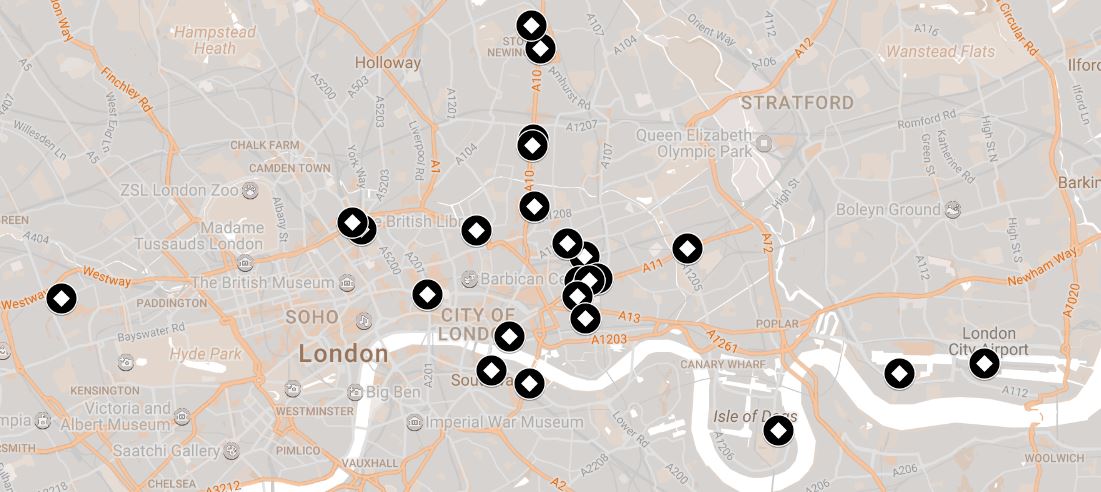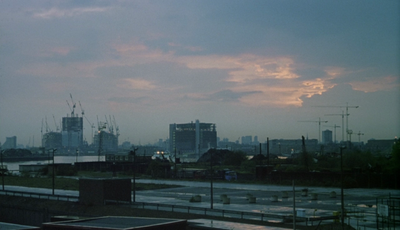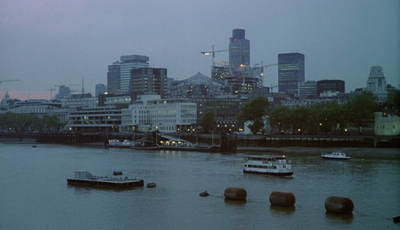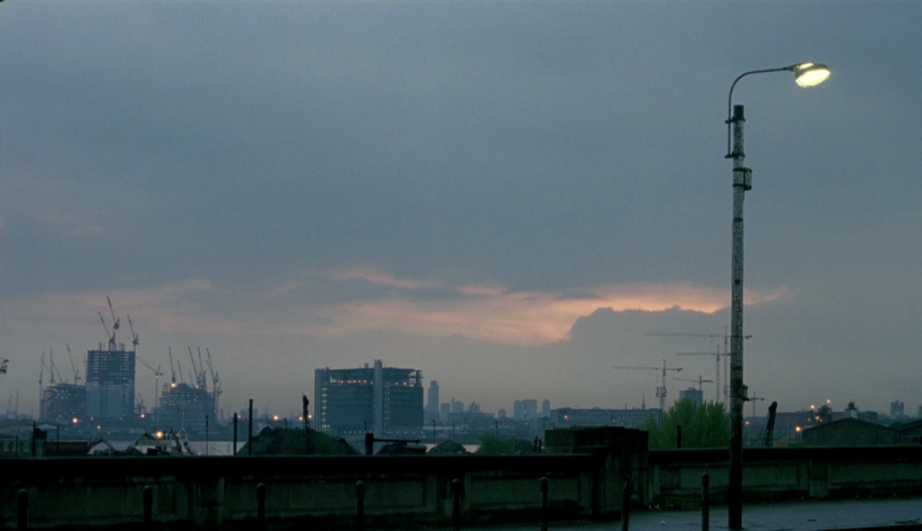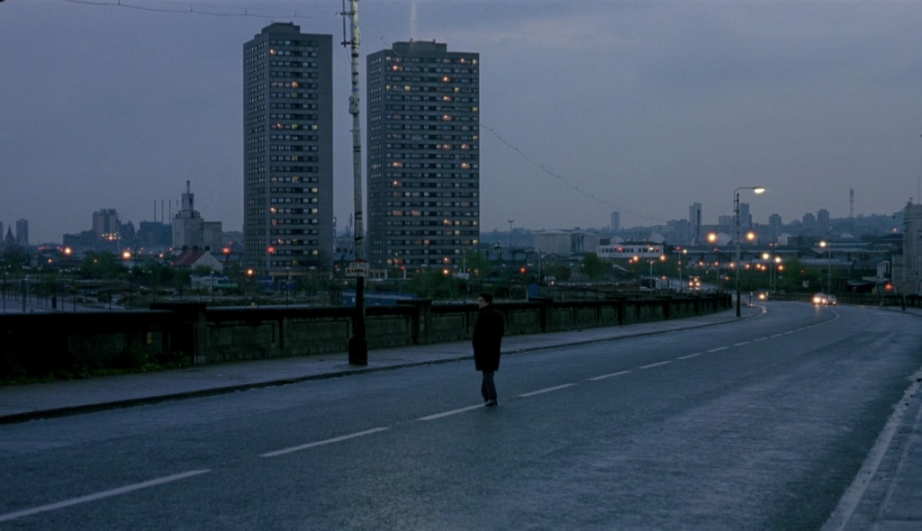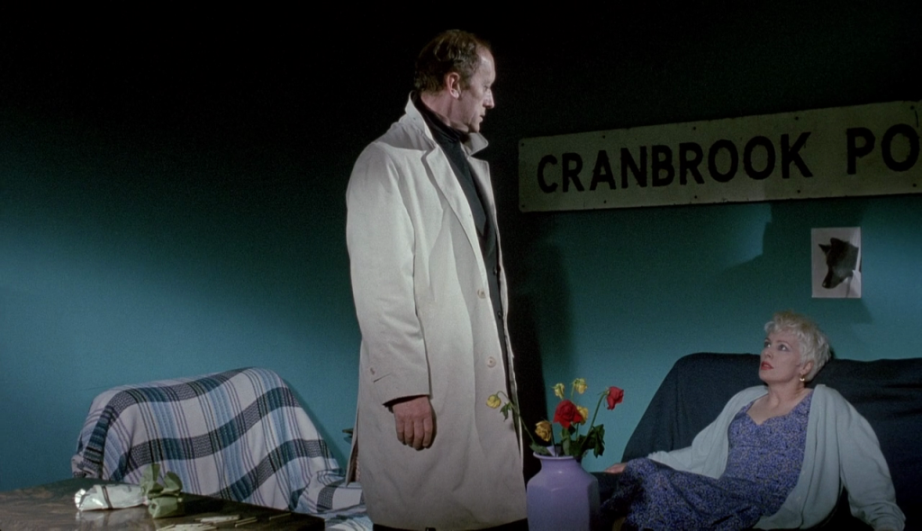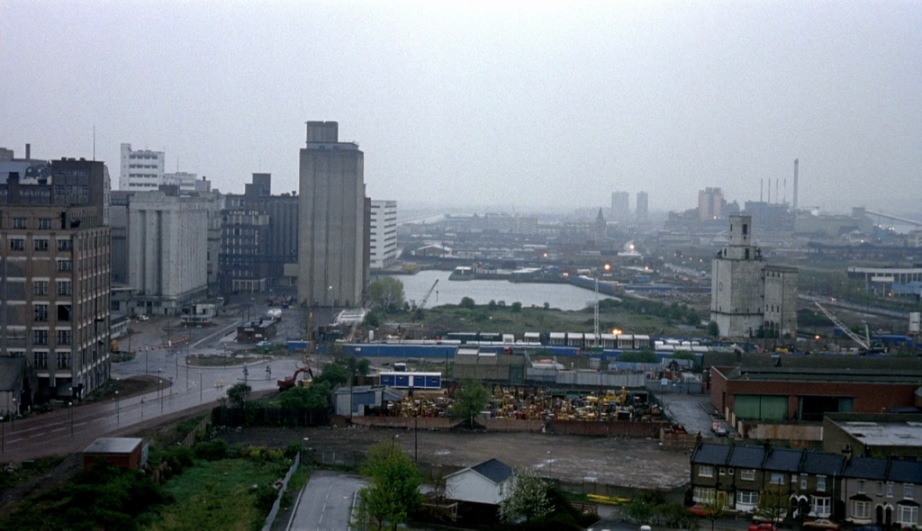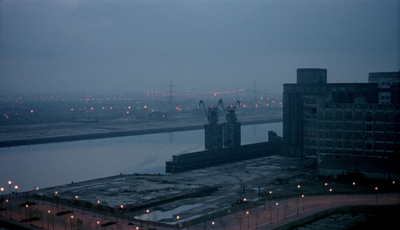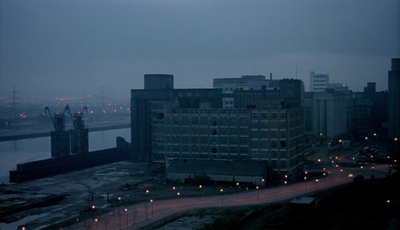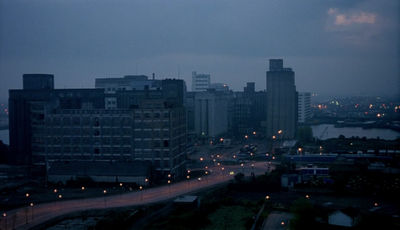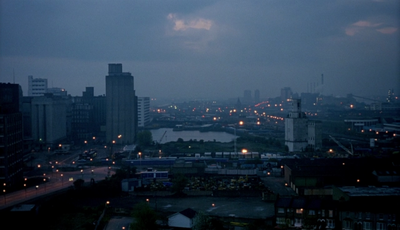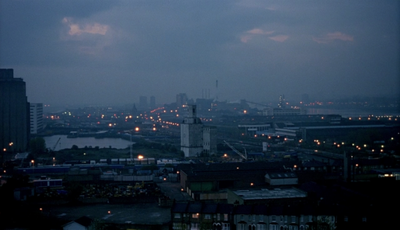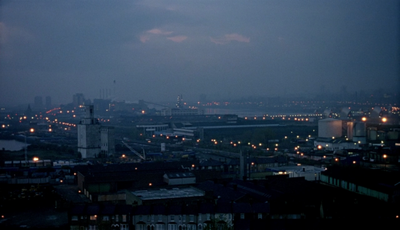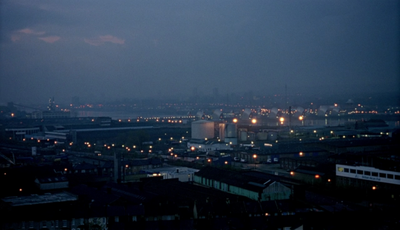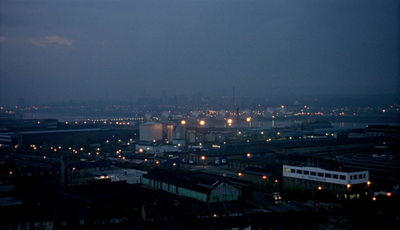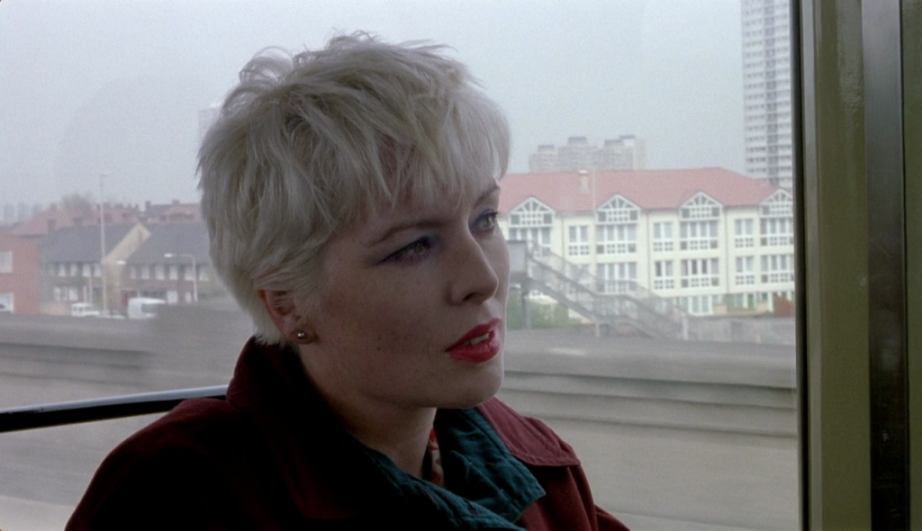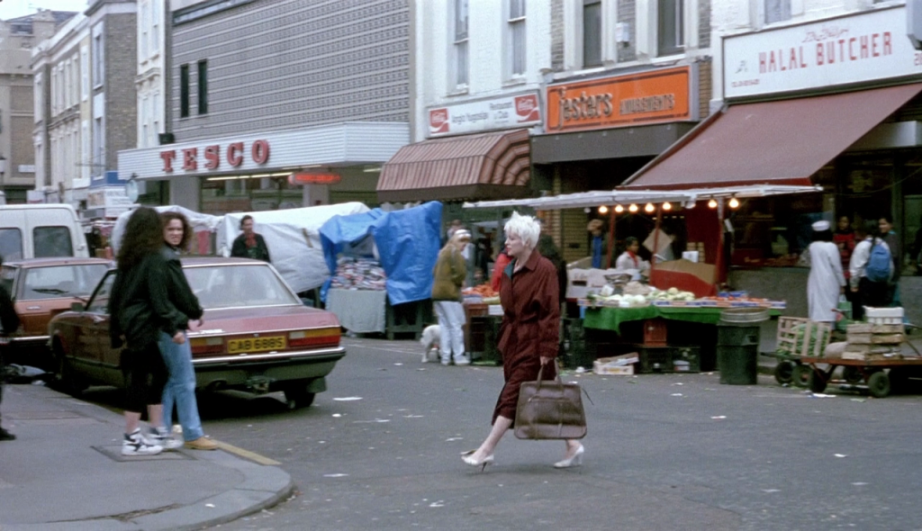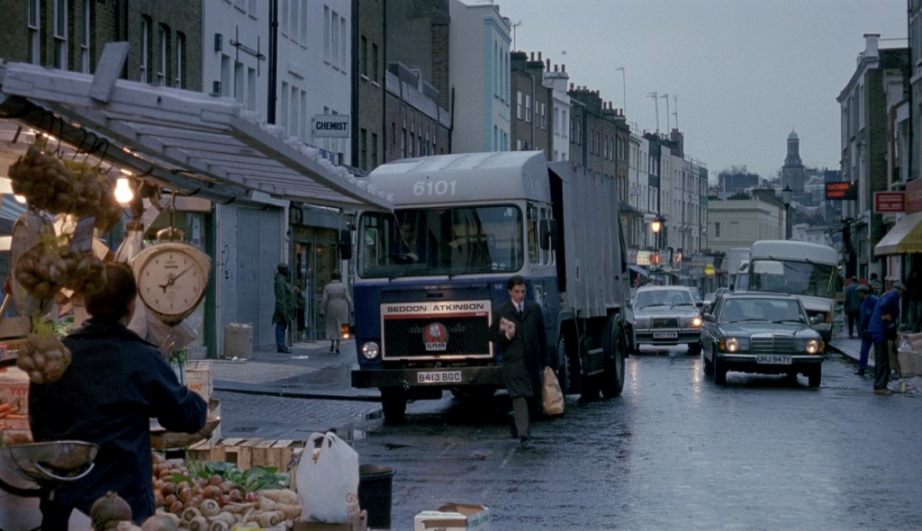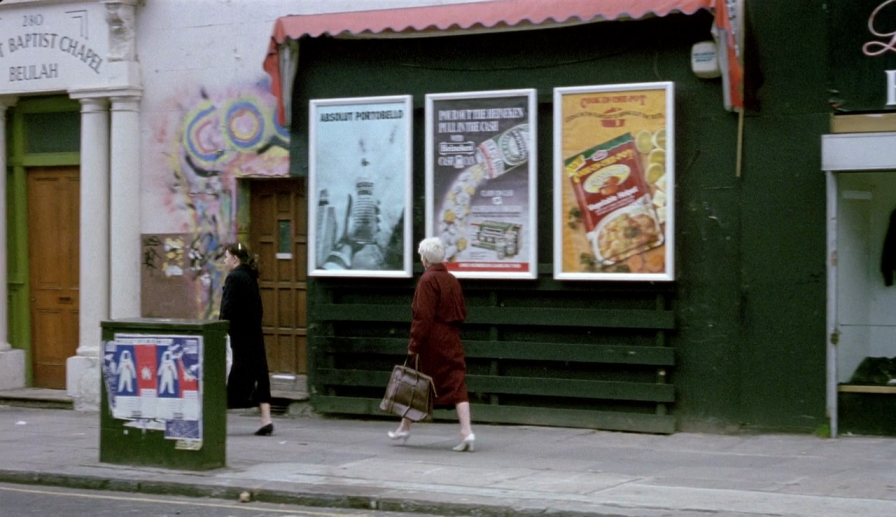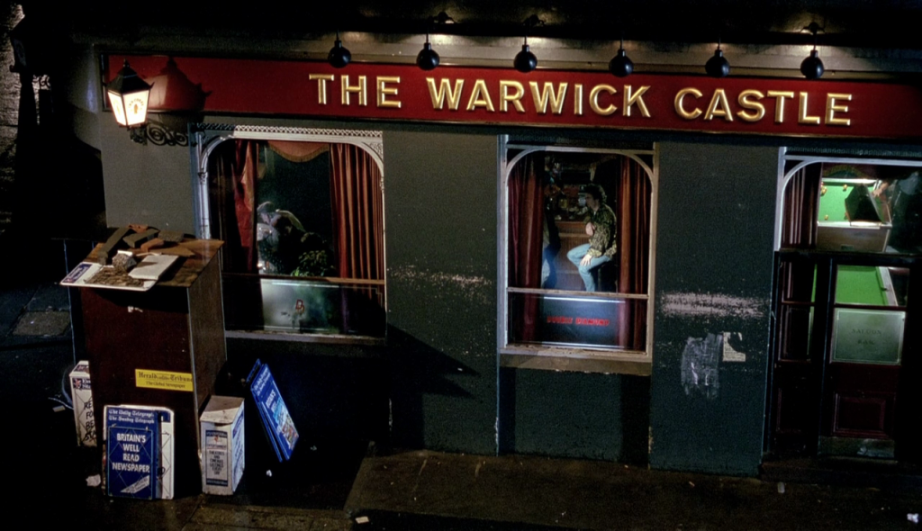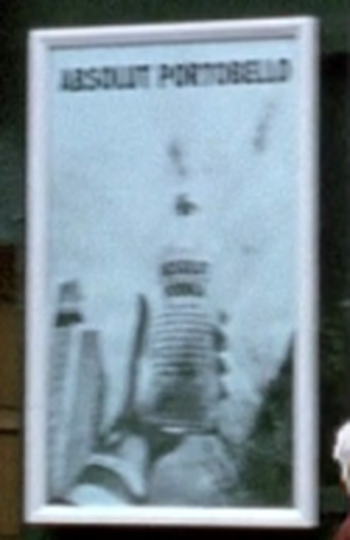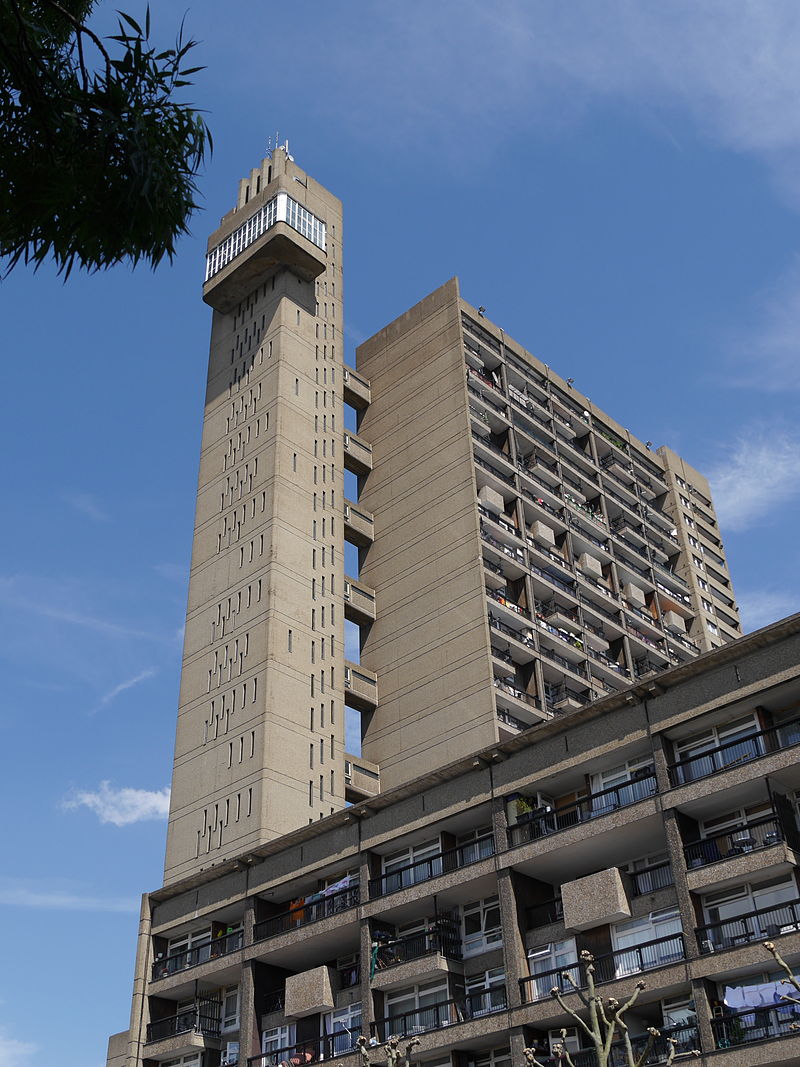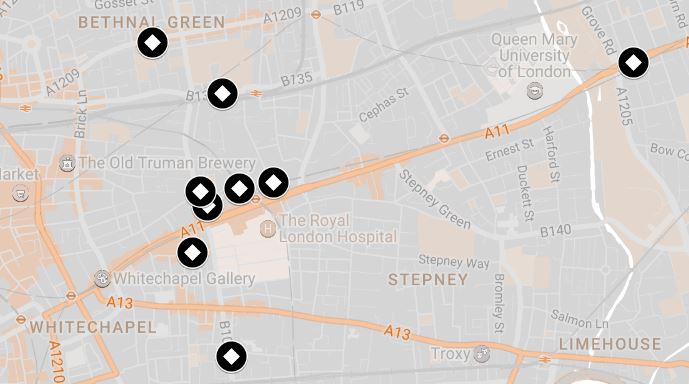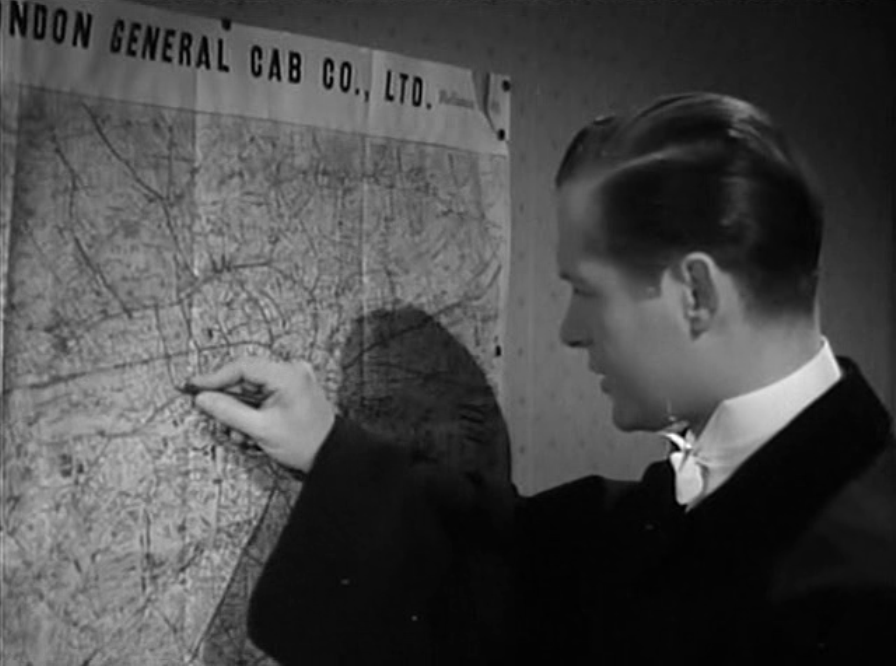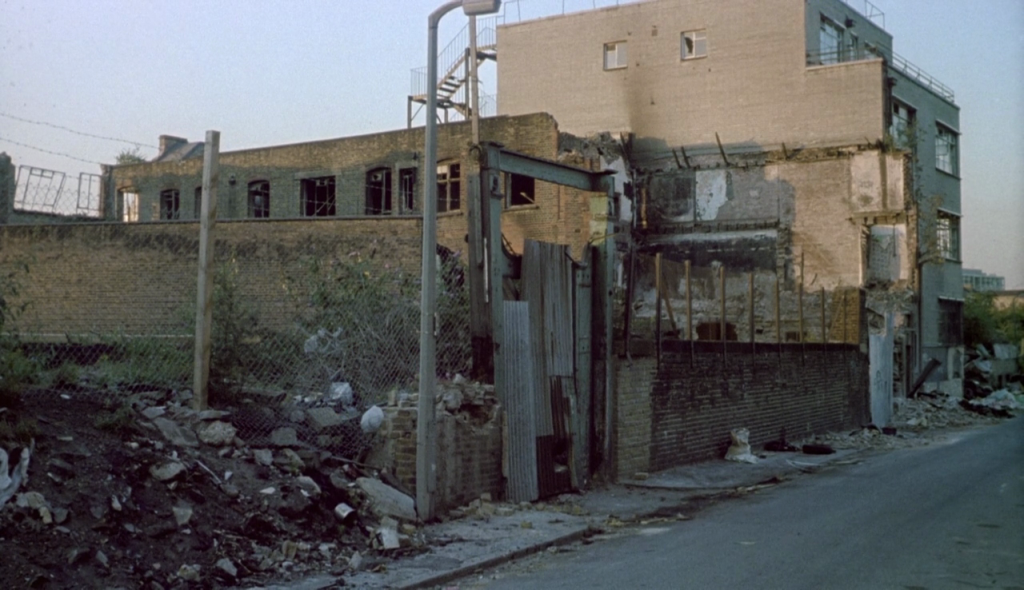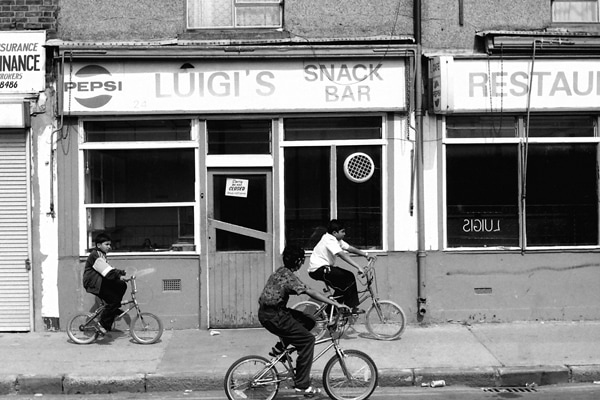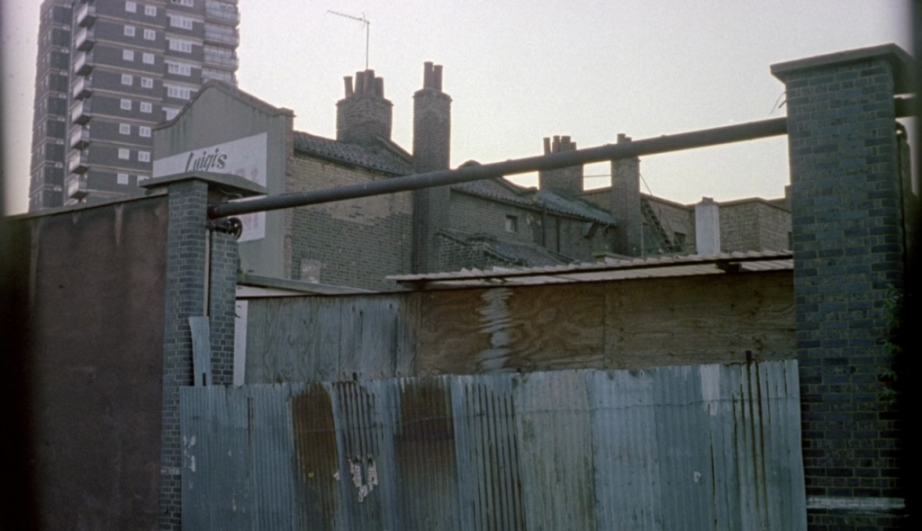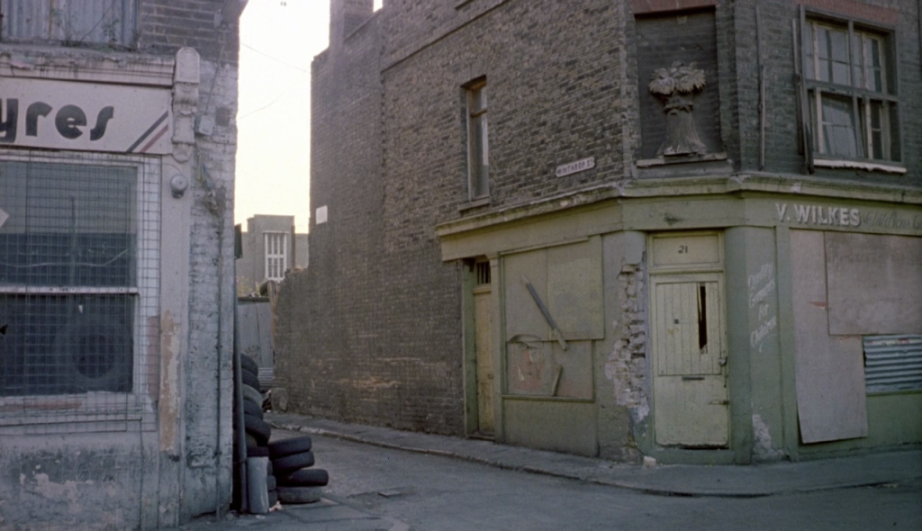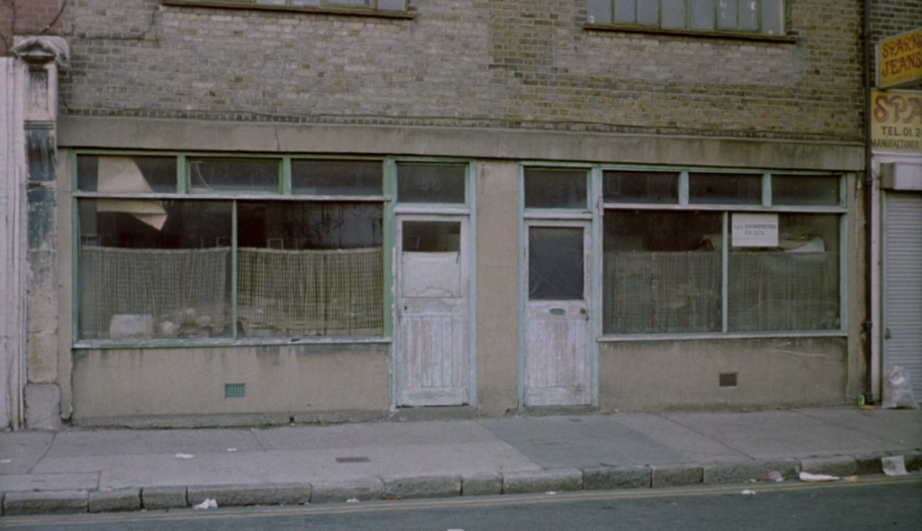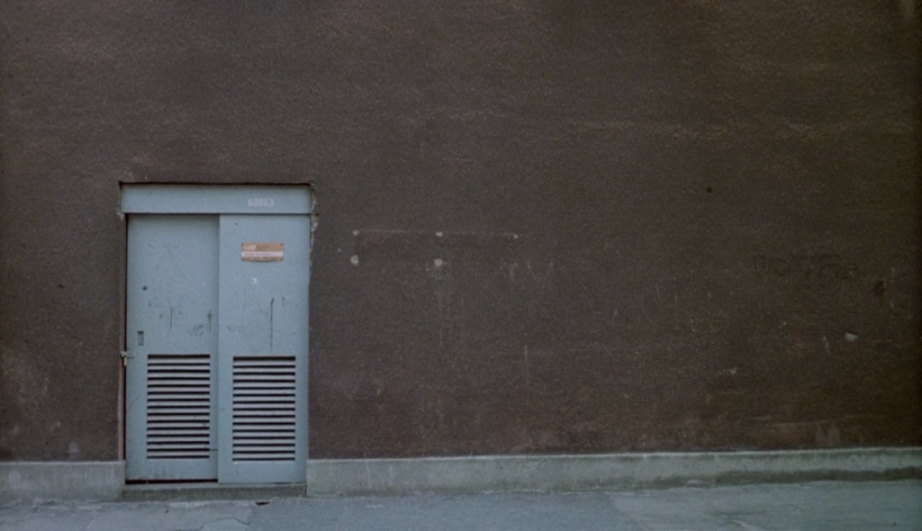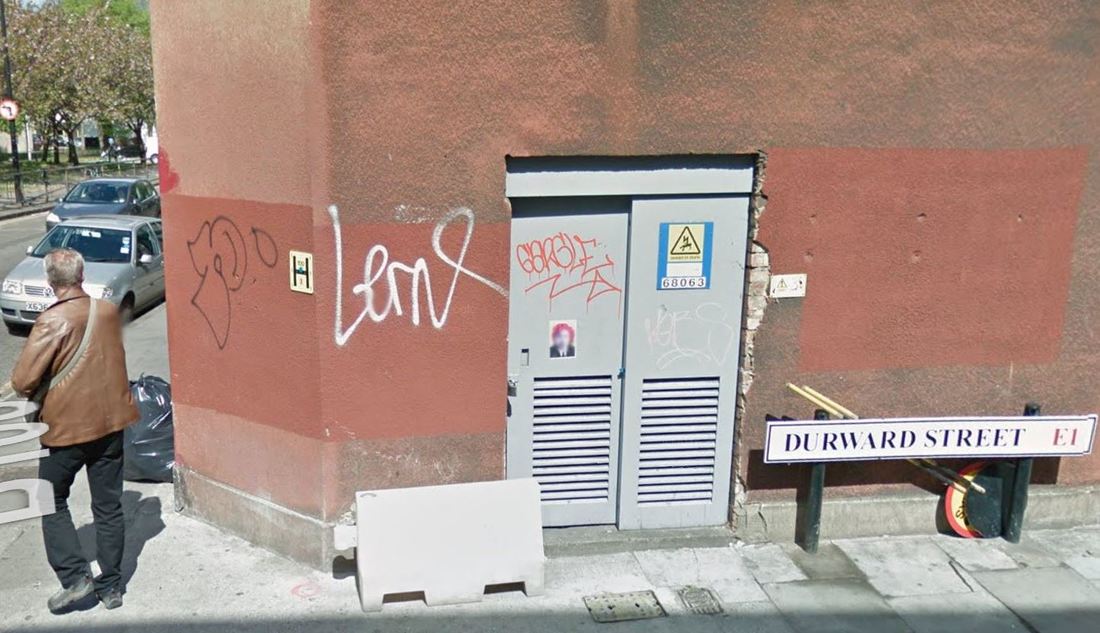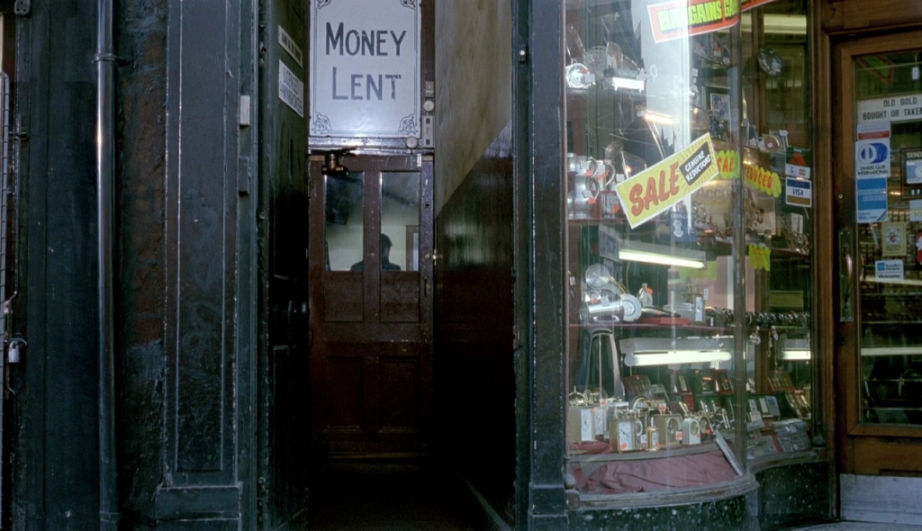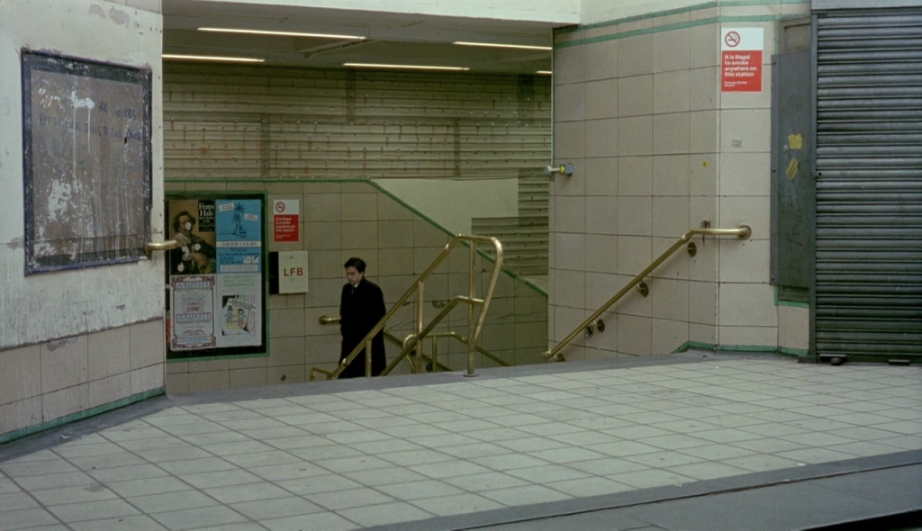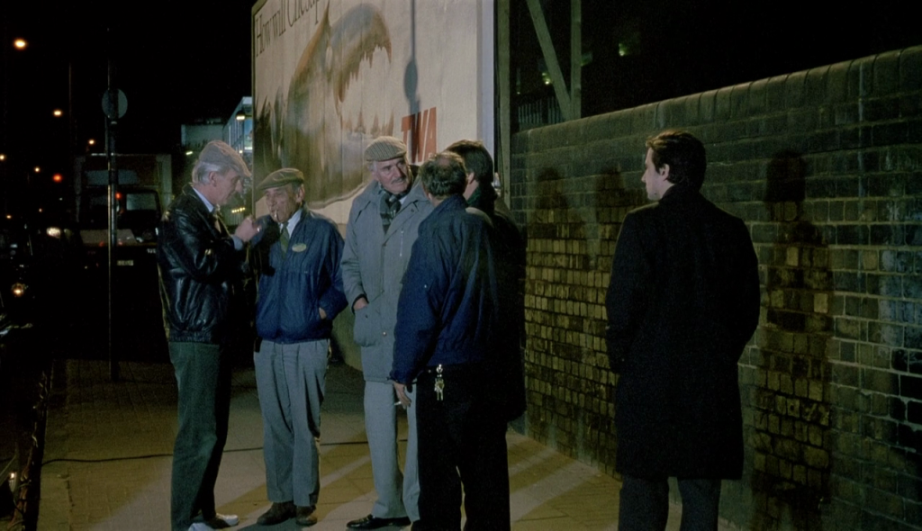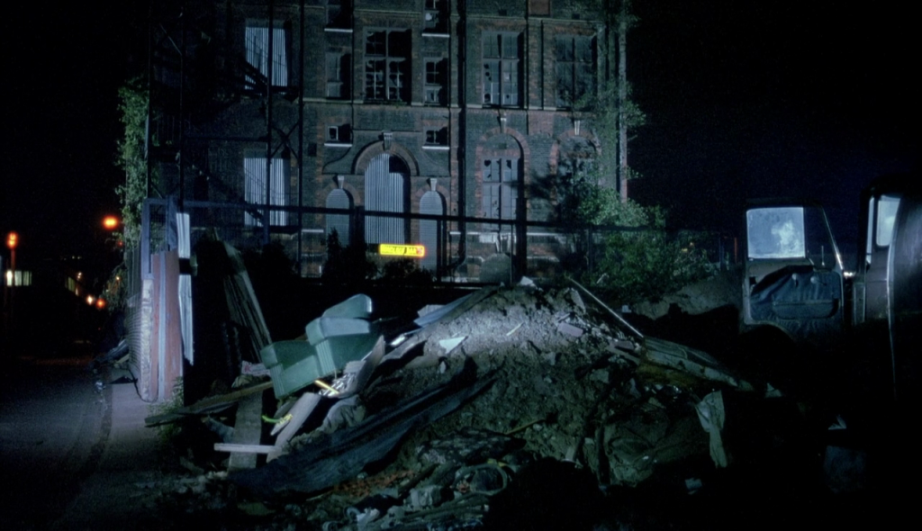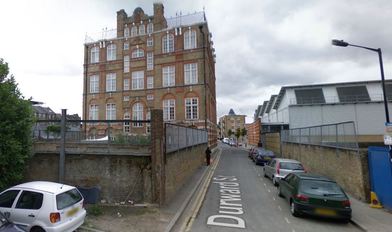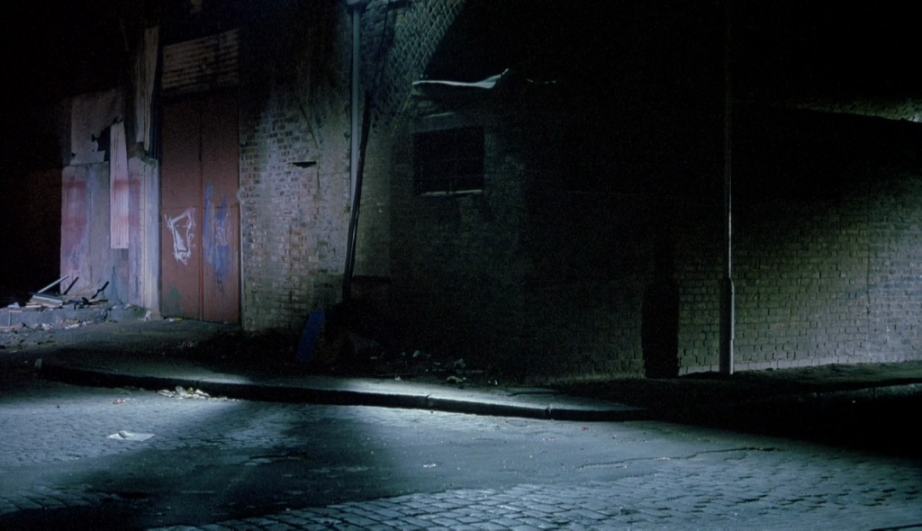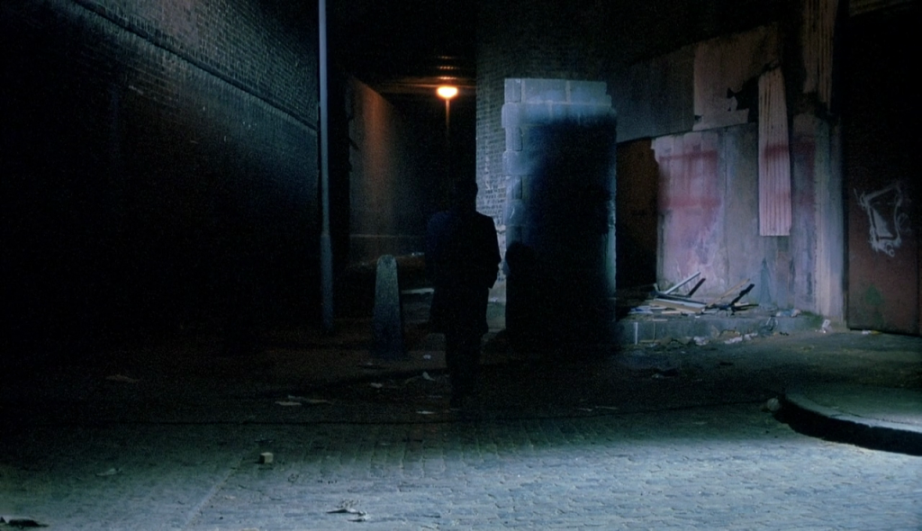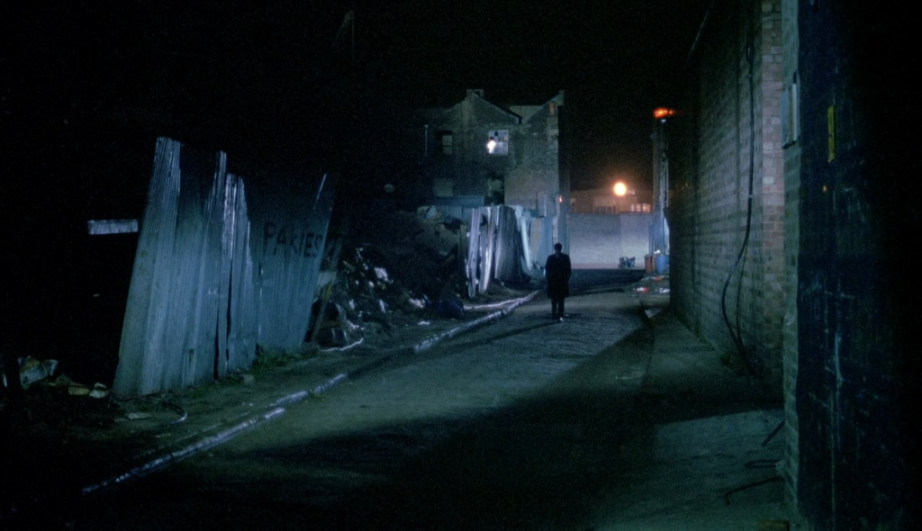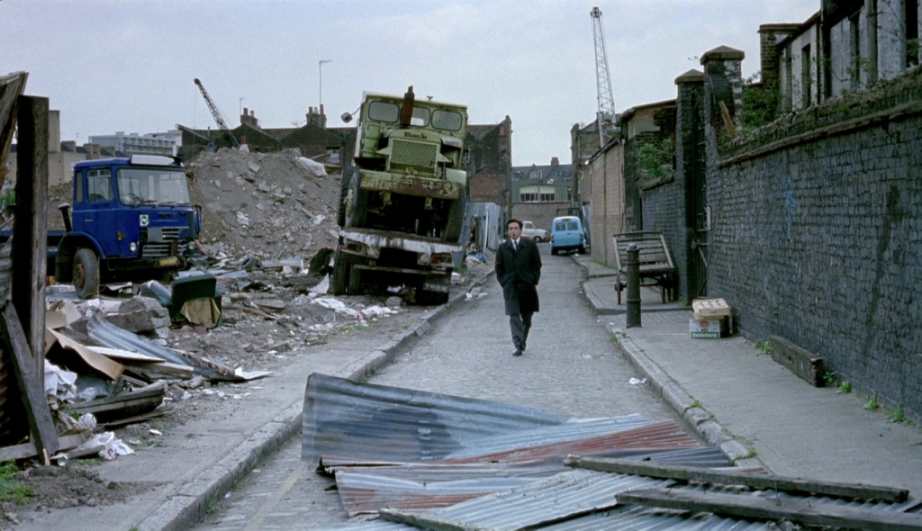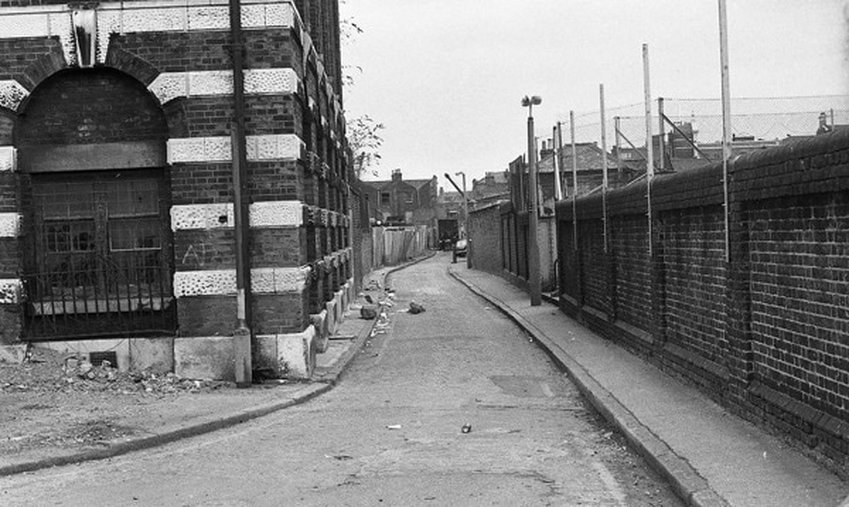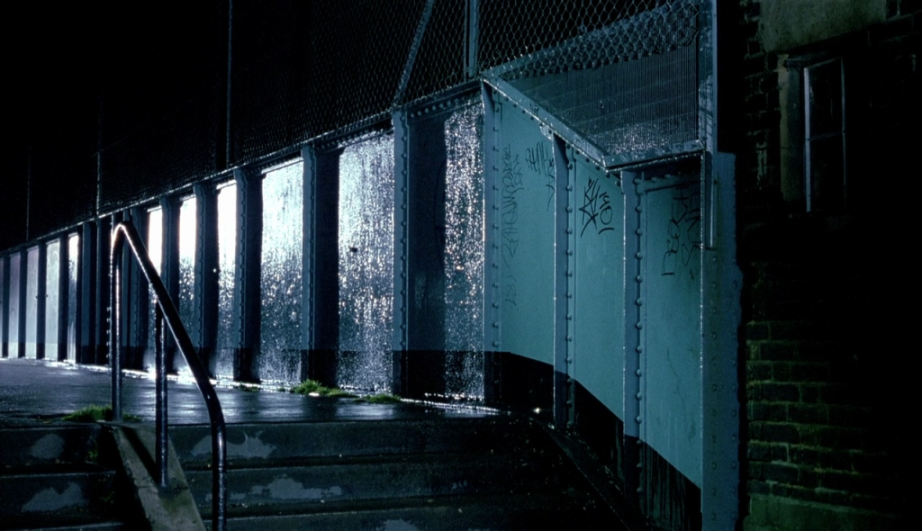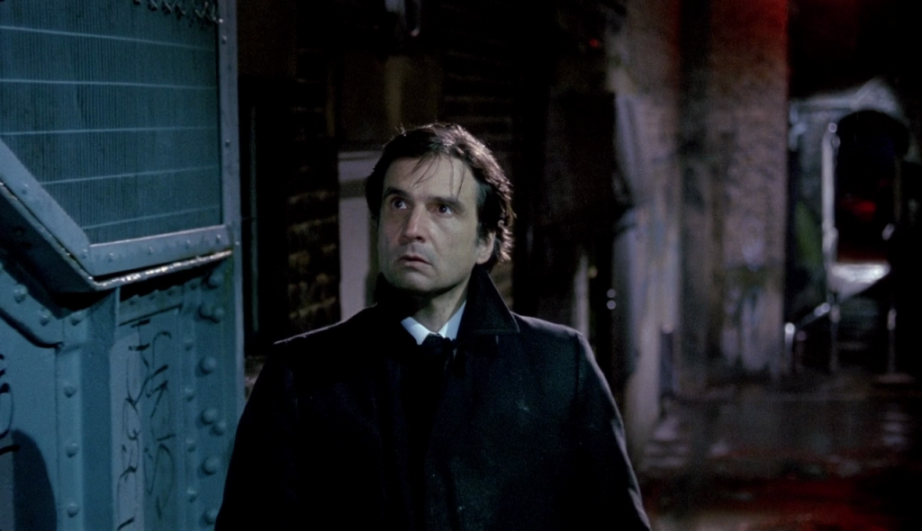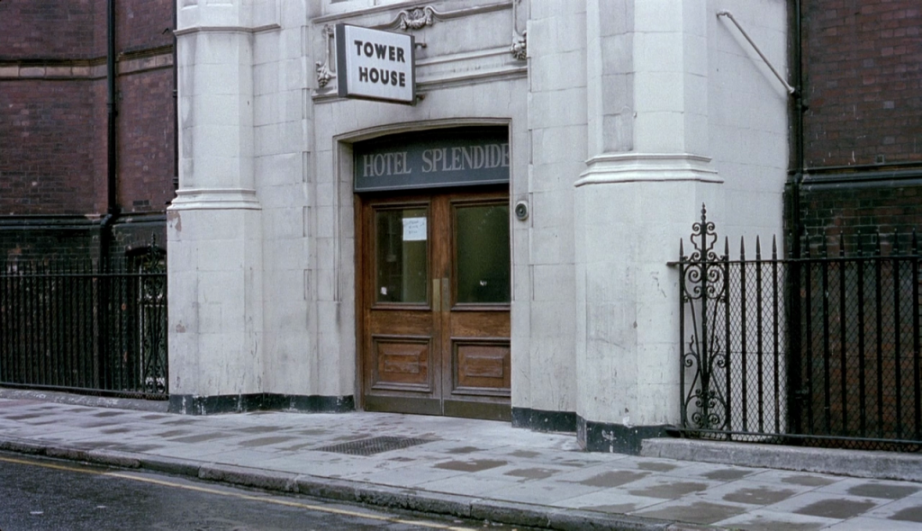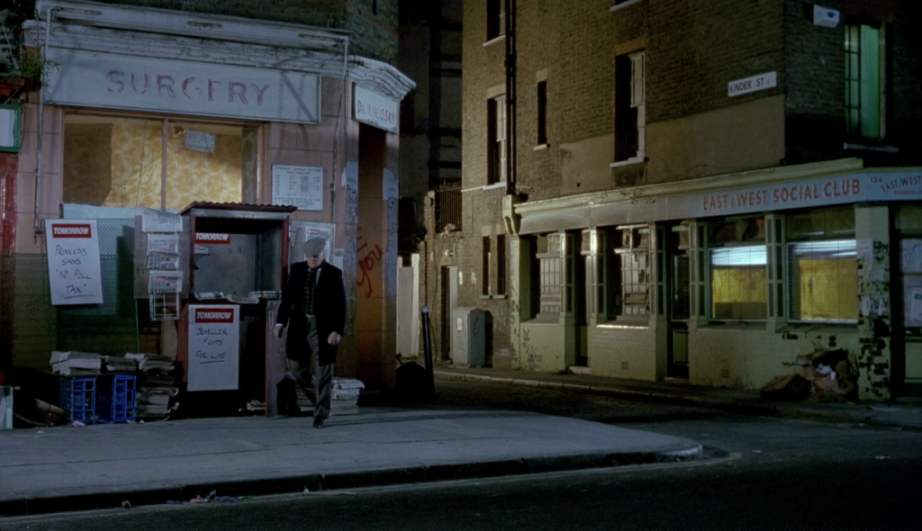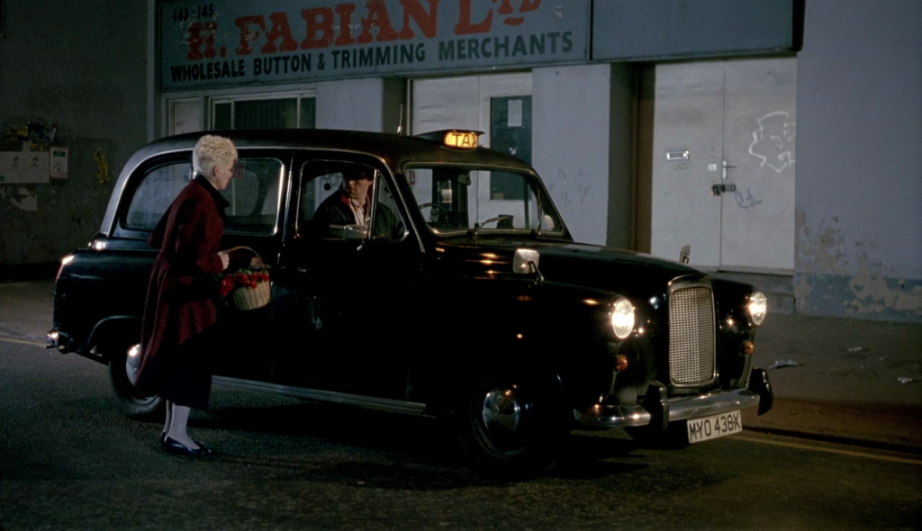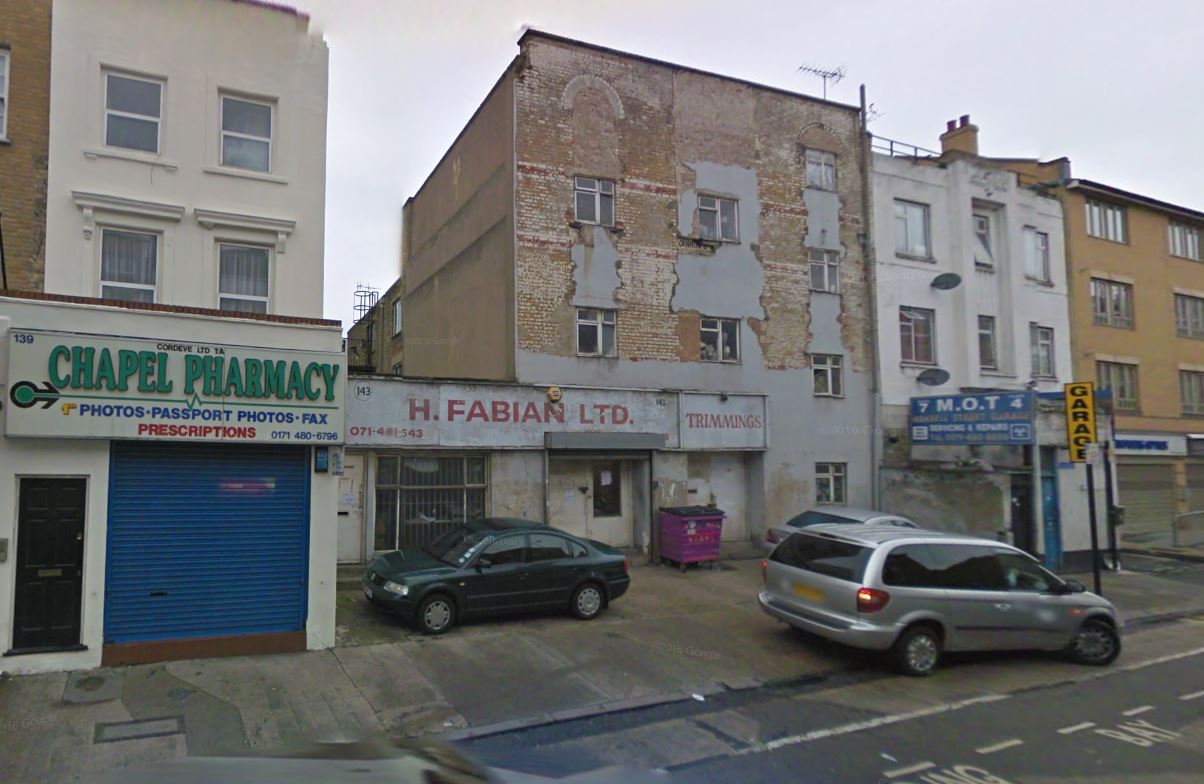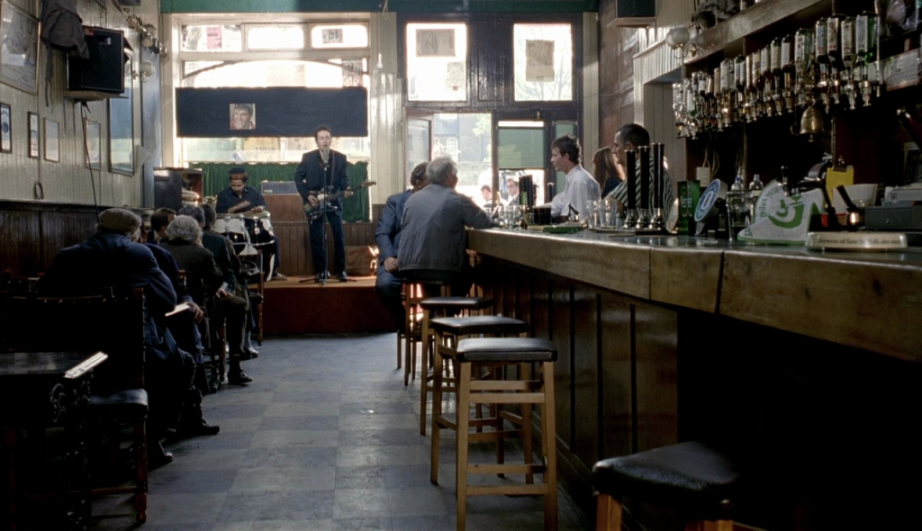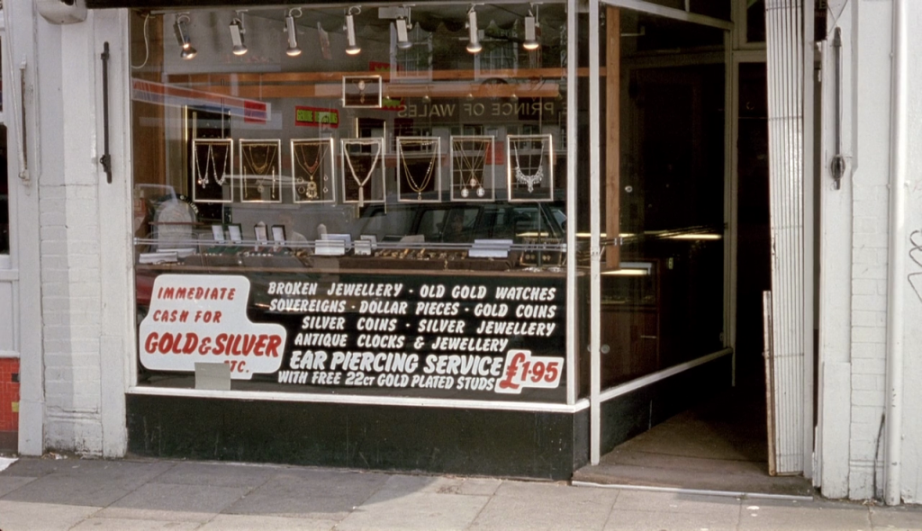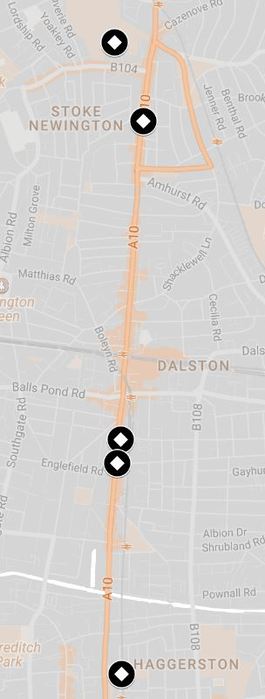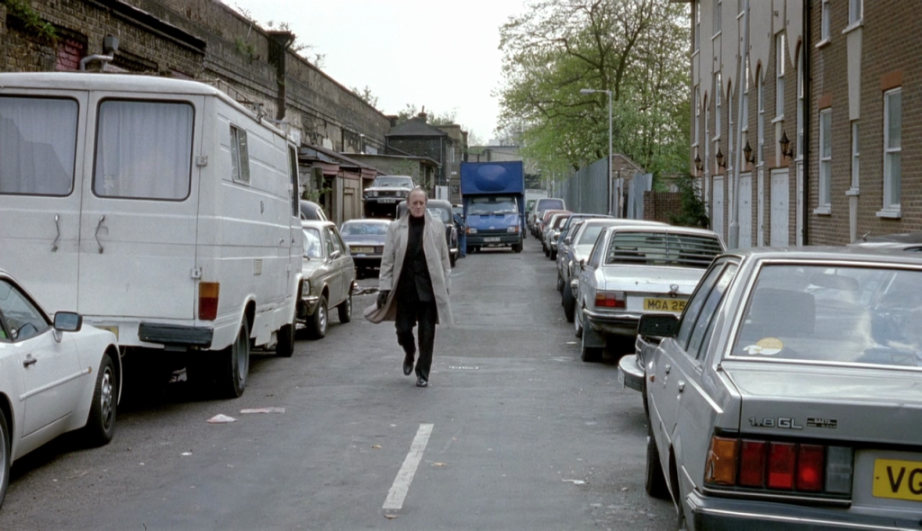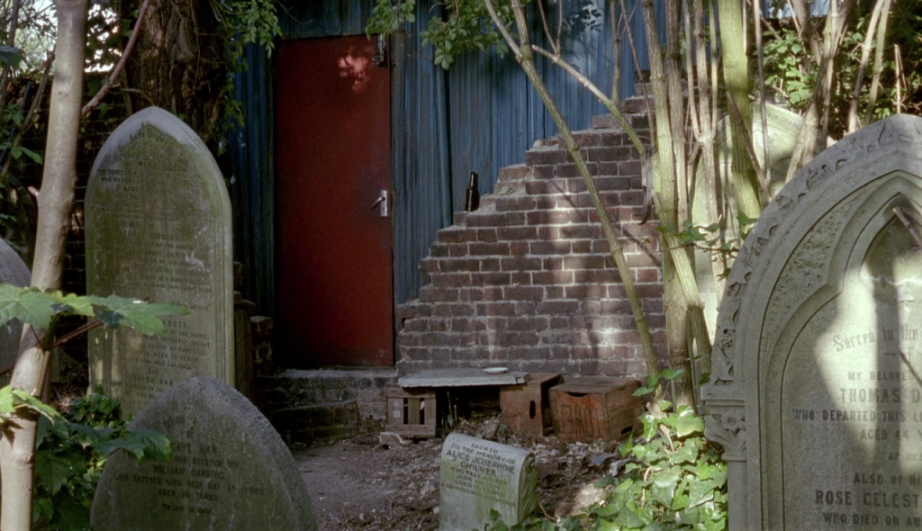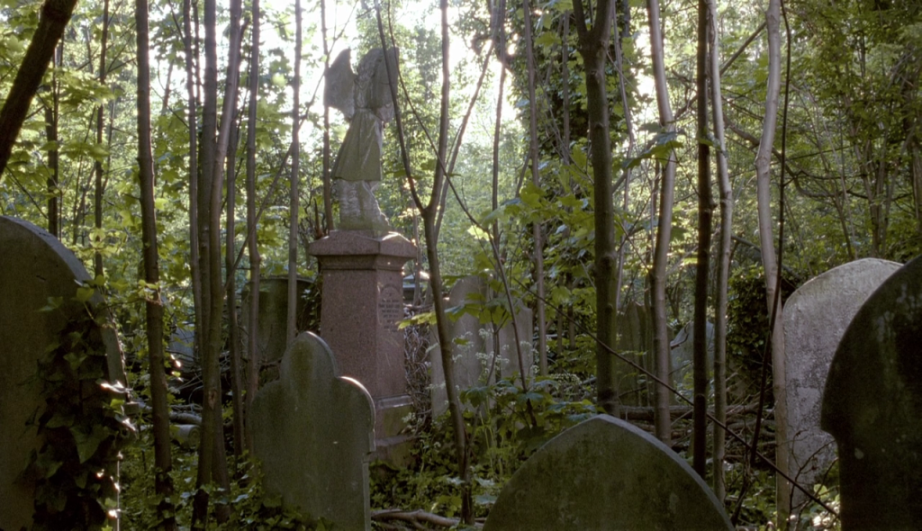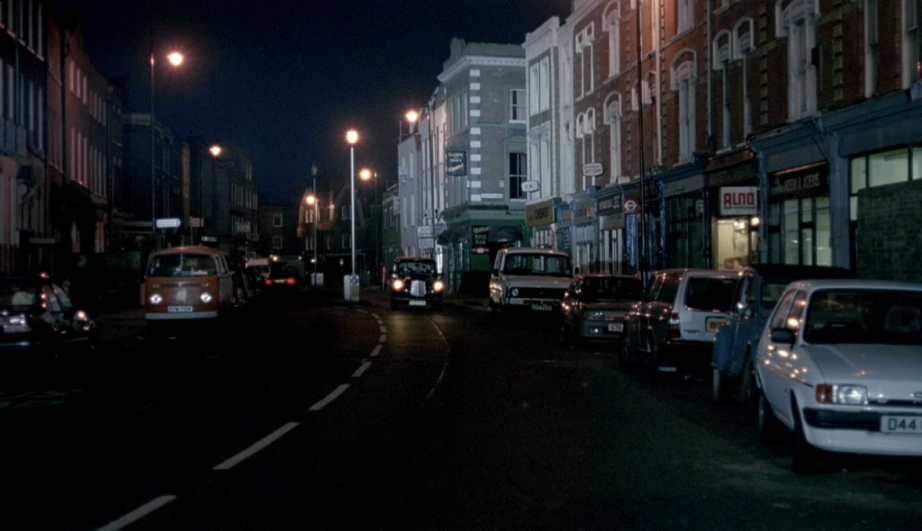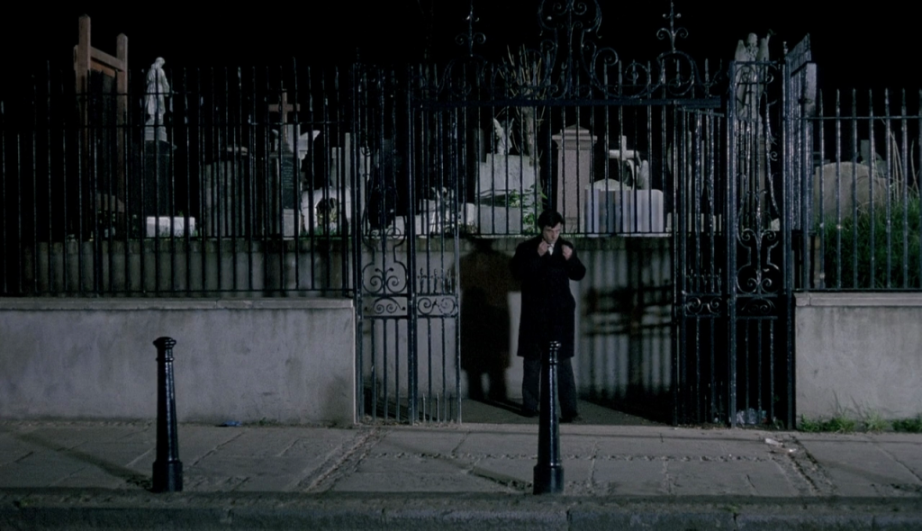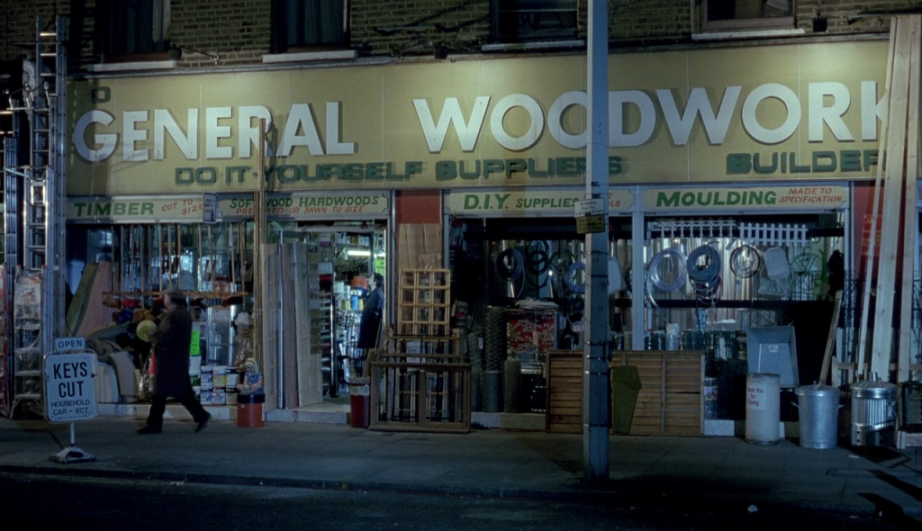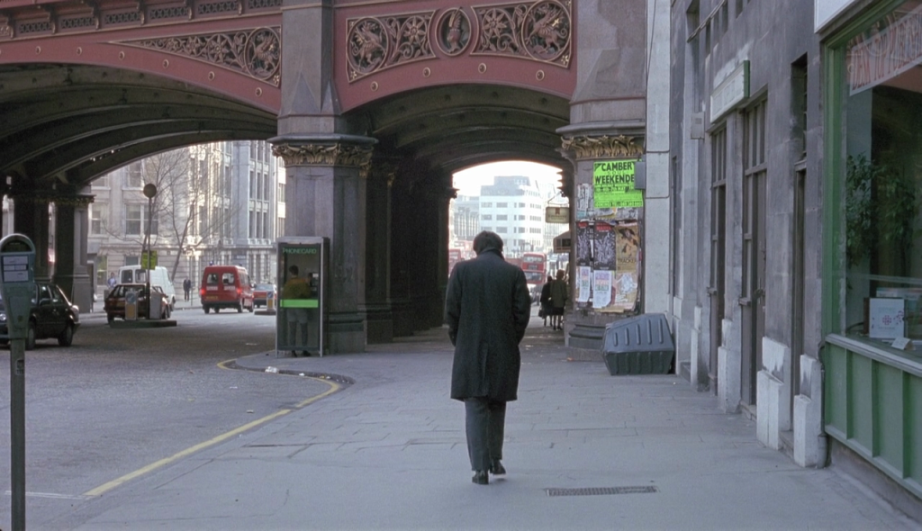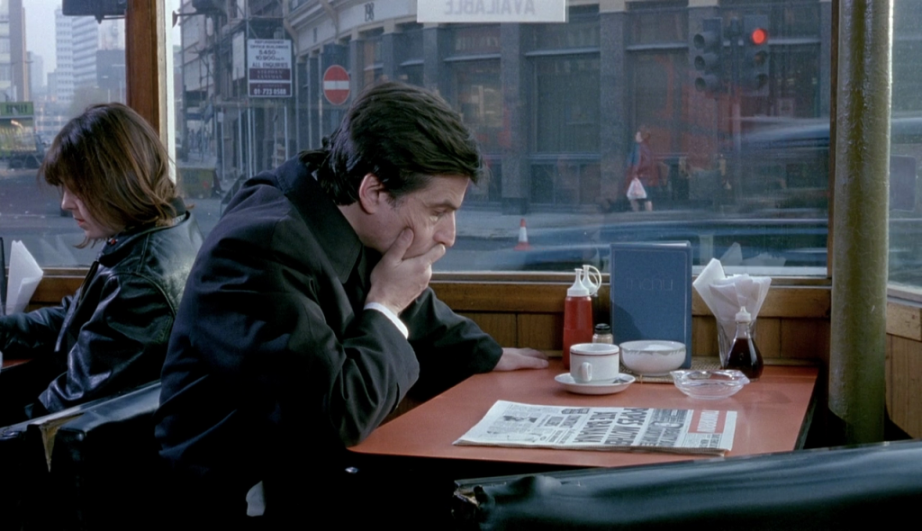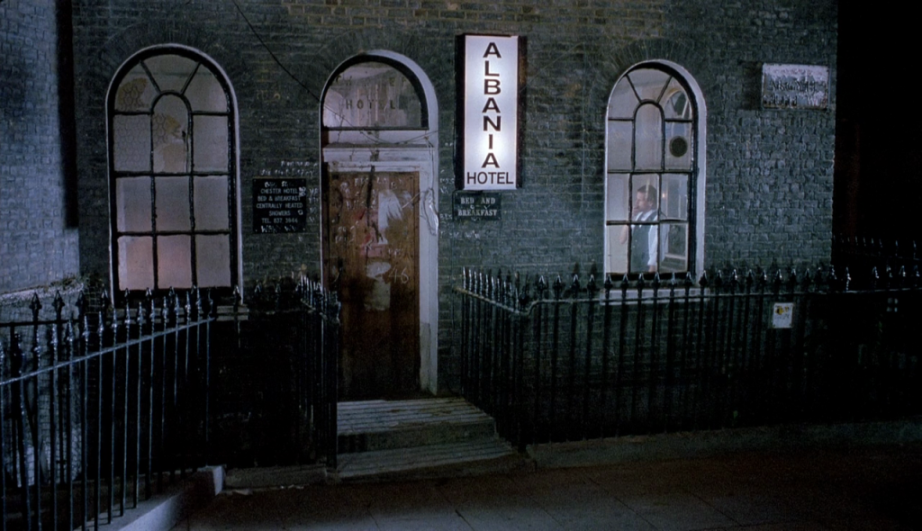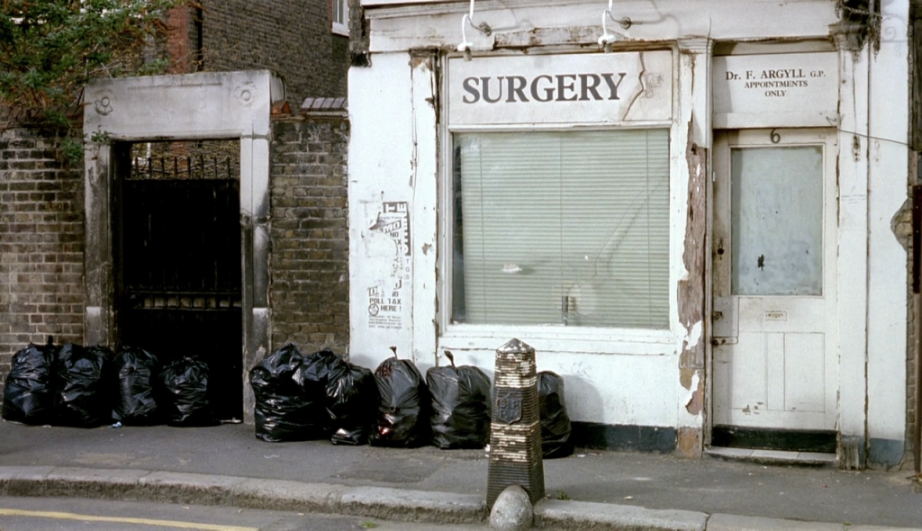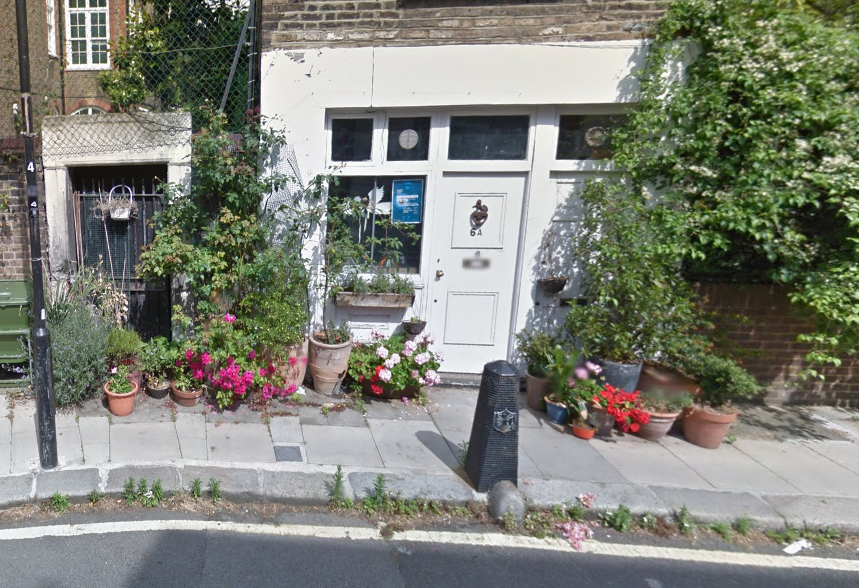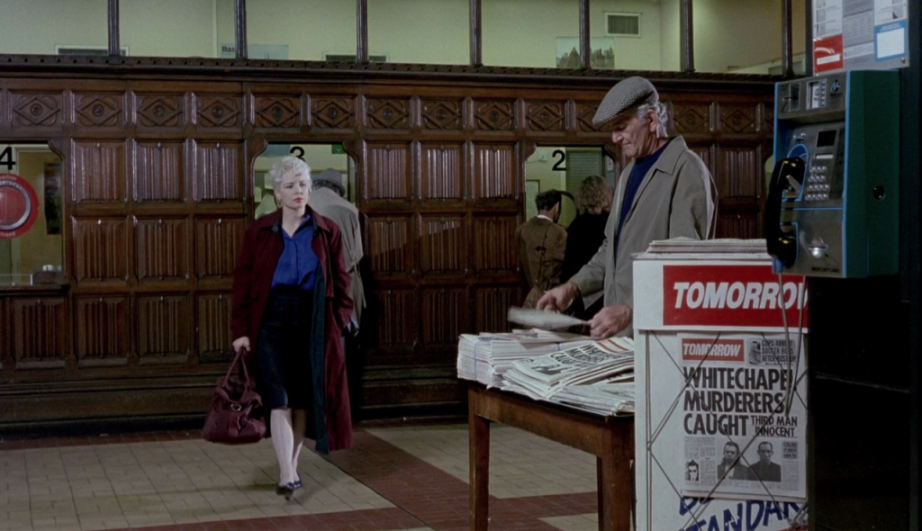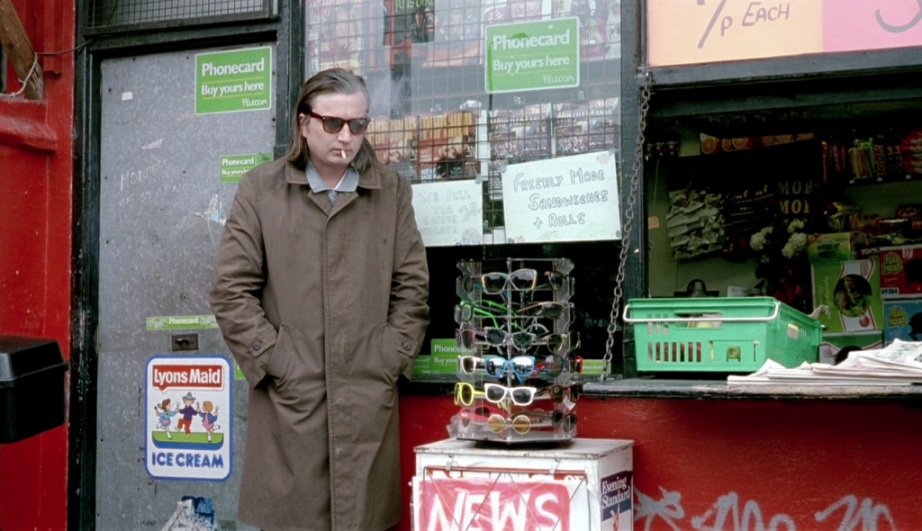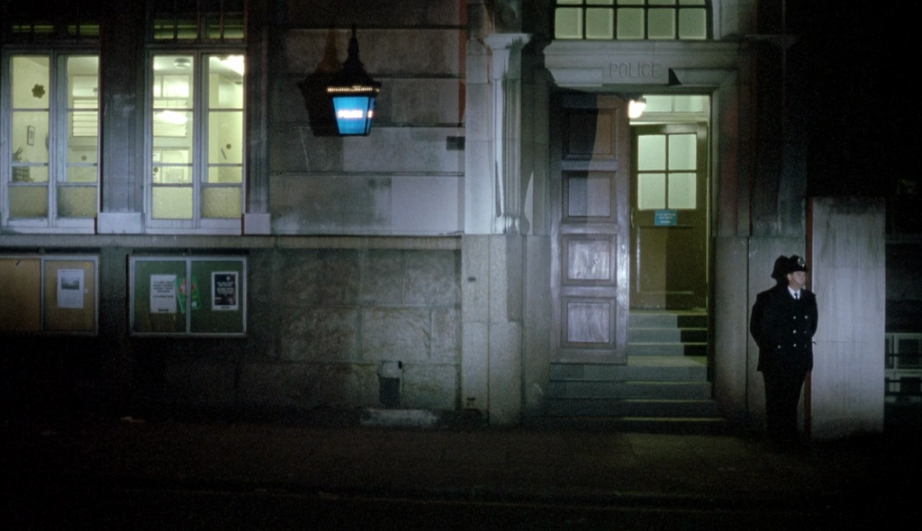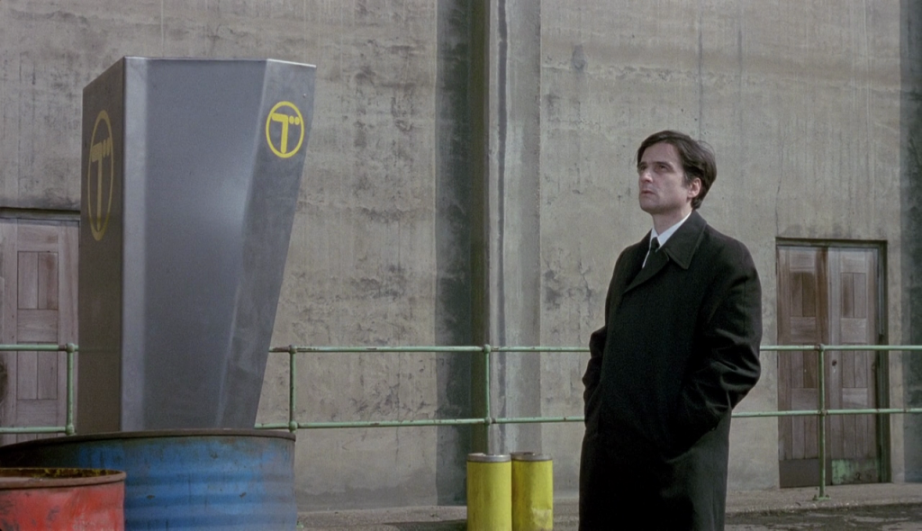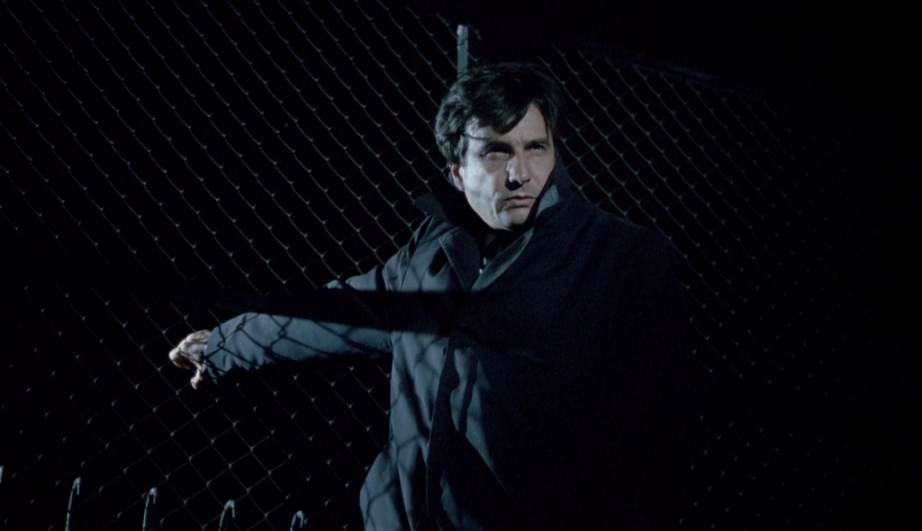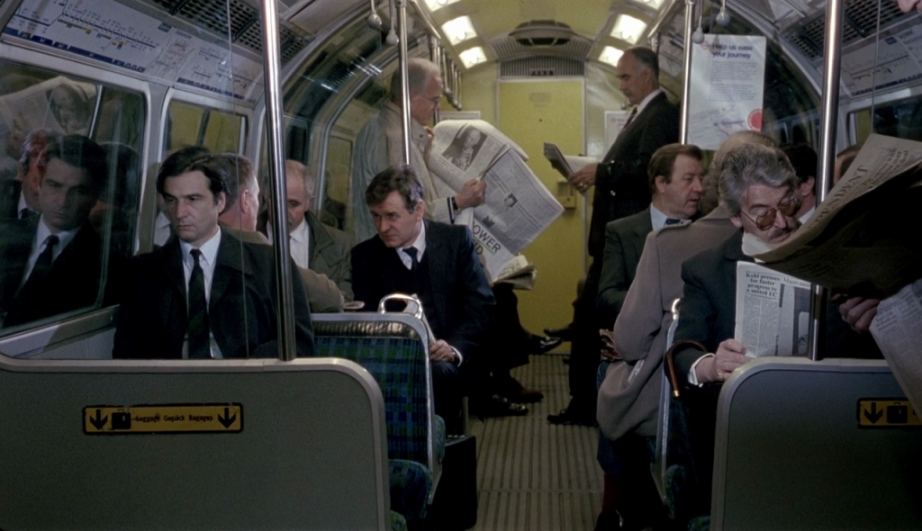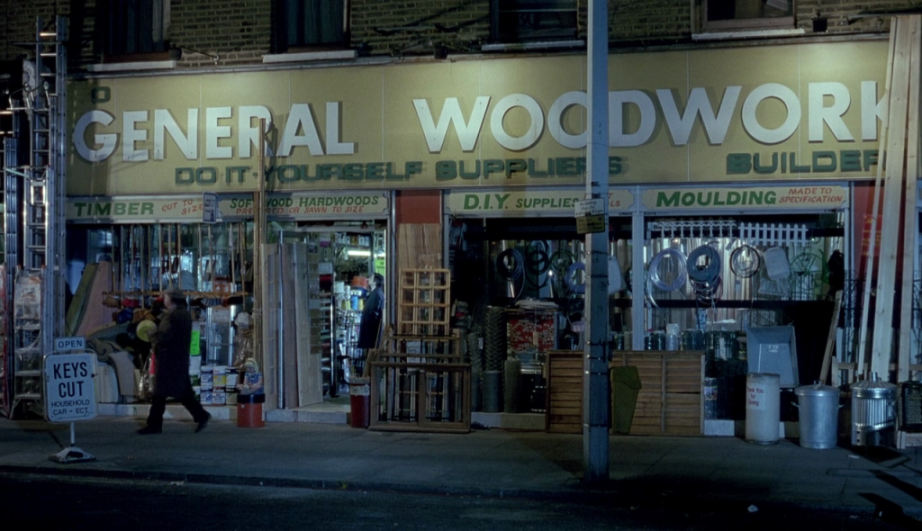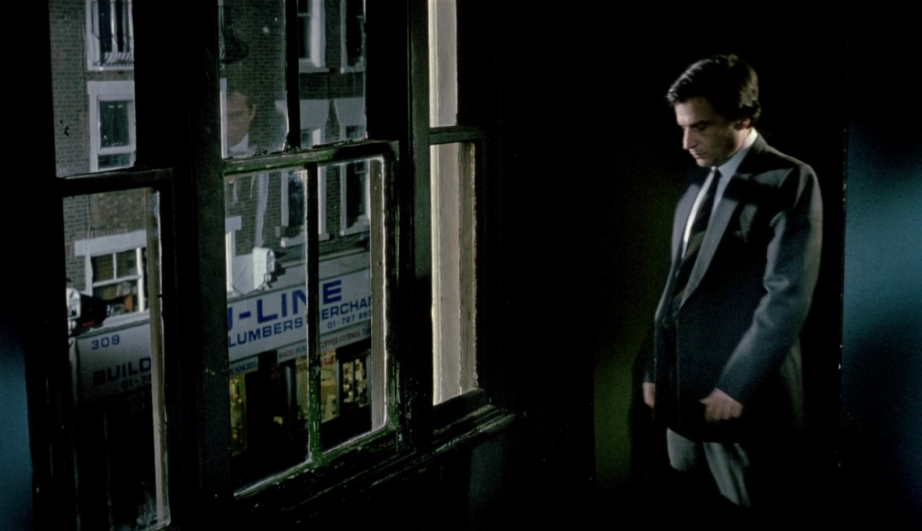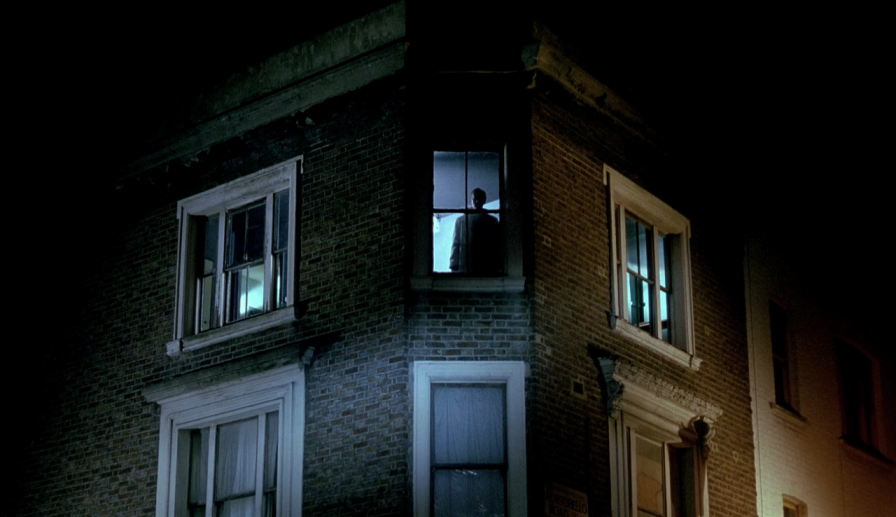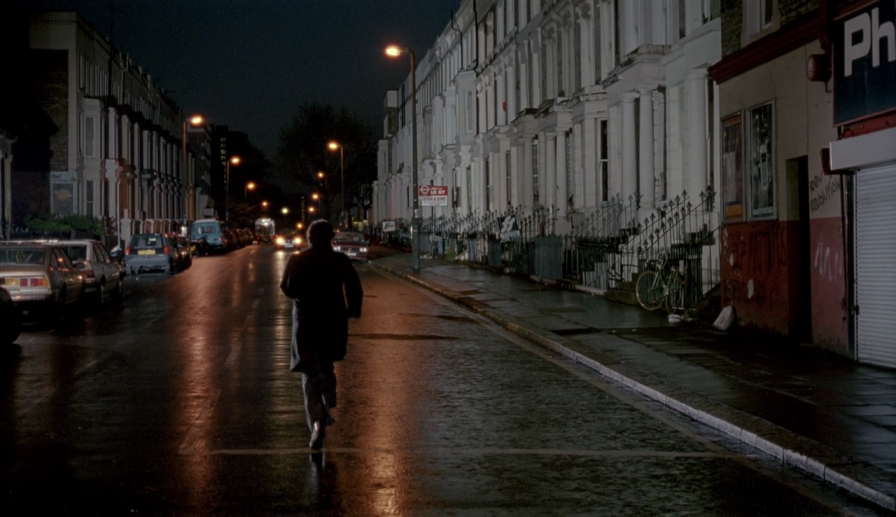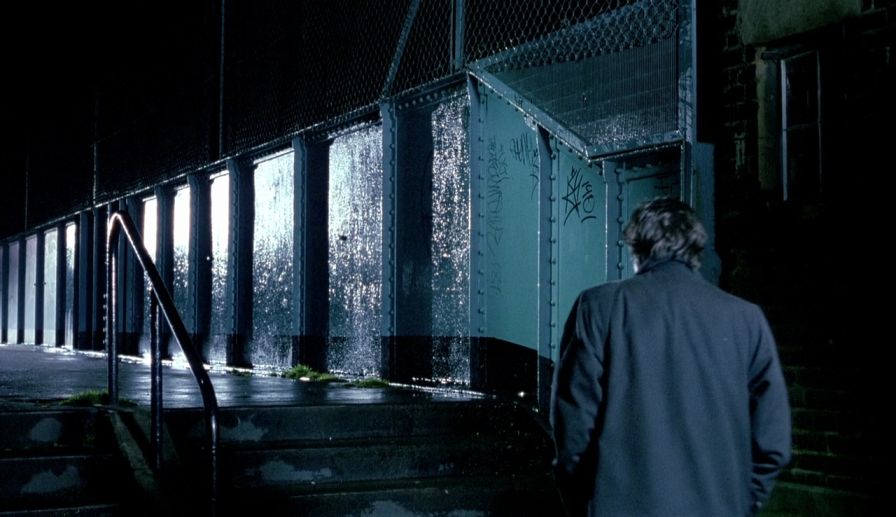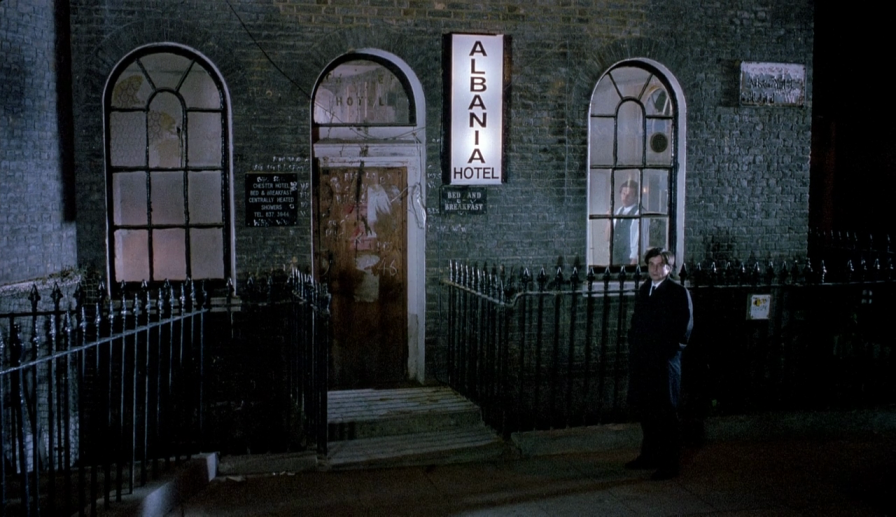a map of Kaurismäki's London c.1989
(the locations of I Hired a Contract Killer)
(the locations of I Hired a Contract Killer)
(For most of the places identified below I am indebted to Simon James's London Film Location Guide (2007), to Paul Newland's 2007 essay for Wider Screen and to Claire Monk's 2009 essay in the Journal of British Cinema and Television.)
1/ along the river - Docklands and the City
The opening credit sequence begins with these four views:
|
|
'Both shots [i.e. shots 1 + 2 of the credit sequence] are taken from the vast, disused Royal Victoria Dock in Silvertown, east of the Isle of Dogs, constructed on Plaistow Marshes in 1855 and closed in 1981. Shot 1 looks west towards the equally deserted West India Docks; shot 2 reverses the camera position to record the vast, disused Royal Albert Dock to the east.'
'Shot 3 presents an uninspiring vista of the City riverfront across the Thames from the south. The only prominent ‘landmarks’ are financial/commercial – most obviously the NatWest Tower (London’s tallest building prior to Canary Wharf, now renamed Tower 42) – and omnipresent cranes show that even the old City is in a constant flux of redevelopment. Shot 4, taken from a position very nearby, further undermines the City’s putative grandeur by rotating the camera to point across an ‘empty’ site on the south bank (since 2002 filled by Norman Foster’s bulbous glass Greater London Authority building) towards the concrete brutalist towers of Guy’s Hospital.' (Monk, 2009, pp. 275 + 276) |
The first return to this type of location is a random shot inserted between Henri's visit to the Honolulu Bar and his return home:
This looks like a view from the North Woolwich Road towards the City - the NatWest Tower can be seen in the middle of the shot. Later, when Henri goes to find Margaret, we see him on (I think) a different stretch of the North Woolwich Road:
|
The two towers are Dunlop Point and Cranbrook Point - built 1967, demolished 1998. Margaret lives in one of them - the latter presumably, since (oddly) she has on the wall of her flat a sign that says Cranbrook Point.
The morning after Henri's first night with Margaret we see a view from her flat over the Royal Victoria Dock, with the still extant 'D' silo in the right foreground: |
Towards the end of the film a night-time panoramic shot from the tower takes in this view:
The only other sight of this district we have is at the end of Margaret's bus journey after she has collected Henri's things from his flat in Portobello Road. This is Silvertown Way, from a 69 bus heading to North Woolwich Station:
2/ Portobello Road
Henri's flat is at 227 Portobello Road, W.11, at the junction with Westbourne Park Road. It is next door to the Beulah Strict Baptist Chapel and opposite the Warwick Castle pub:
Next to Henri's door has been placed a Portobello-themed poster for Absolut vodka, on which is featured the nearby Trellick Tower:
|
|
'The first of the film’s ‘East End’ establishing shots shows a specialist taxi-wash and garage (in Dunbridge Street, Bethnal Green) in a railway arch beneath the main line running out of Liverpool Street from the City. [...] The subsequent shots (6–10) show a variety of derelict or neglected back street sites, some chosen for abstract qualities more than a sense of place.' (Monk, 2009, pp. 277)
|
Shots 6 to 10 of the credit sequence can be identified. This is Durward Street, E.1, formerly Buck's Row, looking west to east. Buck's Row was the site of the first Jack the Ripper murder. This ruined gateway is just opposite the spot where the body of Polly Nichol's was found:
Nothing of this view survives.
This is followed by a view of Winthrop Street where it joined Brady Street, just south of Durward Street at the eastern end:
Shot 9 of the credit sequence shows commercial properties at 30 Vallance Road. We see the backs of these premises in shot 7. They have been demolished and rebuilt:
The last location in this sequence does indeed seem to have been chosen for 'abstract qualities more than a sense of place', and it would seem to be beyond identification, but this is in fact Durward Street again, at the junction with Vallance Road - the same wall can be seen in shot 7:
The first narrative action in this area comes when Henri pawns his gold watch to a moneylender at 244 Bethnal Green Road, E.2:
After he has taken out his savings (from the Woolwich Building Society), we see Henri emerge from Mile End tube station and hire a taxi on the Mile End Road, near the junction with Maplin Street, E.3:
The taxi drops him somewhere near the Honolulu Bar, in the basement of a disused school on Durward Street:
I haven't been able to locate the exact spot where the taxi drops him:
The street that apparently leads to the Honolulu Bar is Winthrop Street. The identification was possible thanks to Philip Cunningham's wonderful photographs of the area before redevelopment:
Claire Monk (p.277) situates the drop-off point at some distance from Durward Street - 'The spectacularly dank railway arch where the cabbie drops Henri [...] is barely five minutes’ walk away [from the railway arch at Dunbridge Street], west along (and across) the same railway line' - but is not more specific about the location.
The footbridge which Henri reaches when he is running from the killer in his flat is near Durward Street. It crosses the railway lines near Whitechapel Station, connecting the Whitechapel Road via Wood's Buildings to Winthrop Street:
There are two other locations in this general area. The Hotel Splendide where Henri and Margaret hide out is Tower House on Fieldgate Street, E.1:
When news breaks of Henri's involvement in a robbery, we see a newspaper seller on Cannon Street Road, E.1, at the corner with Kinder Street:
We then see Margaret in the East & West Social Club opposite (formerly the British Queen pub), where she is confronted by the killer. The taxi she hails stops in front of H. Fabian Ltd at 143 Cannon Street Road. These premises were still there in 2009, but like the doctor's surgery and social club opposite they have now been demolished and rebuilt:
4/ up the Kingsland Road - Haggerston, Dalston and Stoke Newington
The assassin lives off Geffrye Street, E.2, which runs parallel to the Kingsland Road, just behind the Geffrye Museum:
At its northern end the Kingsland Road leads through Kingsland High Street and Stoke Newington Road to Abney Park cemetery, the film's last location:
The film had been in Stoke Newington some time earlier, when Henri bought rope from a DIY shop at 80 Stoke Newington High Street, N.16:
5/ various places
Henri works for 'Her Majesty's Waterworks' in Atlantic House, 50 Farringdon Street, E,C,4. Now demolished, Atlantic House was actually home to Her Majesty's Stationery Office. The view above is looking south under Holborn Viaduct.
Henri reads a newspaper in the Shepherdess Café, on the corner of City Road, E,C.1, and Shepherdess Walk.
When Henri runs away from the man on the railway footbridge, he finds himself in front of the Albania Hotel, now the Wardonia Hotel, 46-54 Argyle Street, W.C.1. Round the corner in Whidborne Street is the surgery where the killer consults his doctor:
|
Many thanks to Luke Jacob for locating this. The bollard had been my only clue, bearing a crest with the inscription 'St P P M', which stands for St Pancras Parish Middlesex.
Whidborne Street and Argyle Street are close to St Pancras station, where Margaret buys tickets and a newspaper: |
The man below left is selling newspapers next to the Warwick Castle on Portobello Road. I don't know where the man (Aki Kaurismaki) below right is selling sunglasses:
When the real jewel thieves are caught they are brought to Tower Bridge Police Station, at 209 Tooley Street, S.E.1:
There are two other places I can't yet identify. I don't expect to find the location of this telephone box, nor that of the bridge from which Henri doesn't jump:
6/ topographical incongruities
Henri takes the Piccadilly Line to get from his work on Farringdon Street to his home on Portobello Road. This would not be the right train to take:
Henri buys a rope to hang himself from a shop on Stoke Newington High Street, N.16, when there is a perfectly good hardware shop on Westbourne Park Road, immediately opposite his flat:
Henri runs up Westbourne Park Road to escape the assassin in his flat. He is then at the footbridge near Whitechapel station, and then in front of the Albania Hotel, near King's Cross. This is not feasible on foot:
